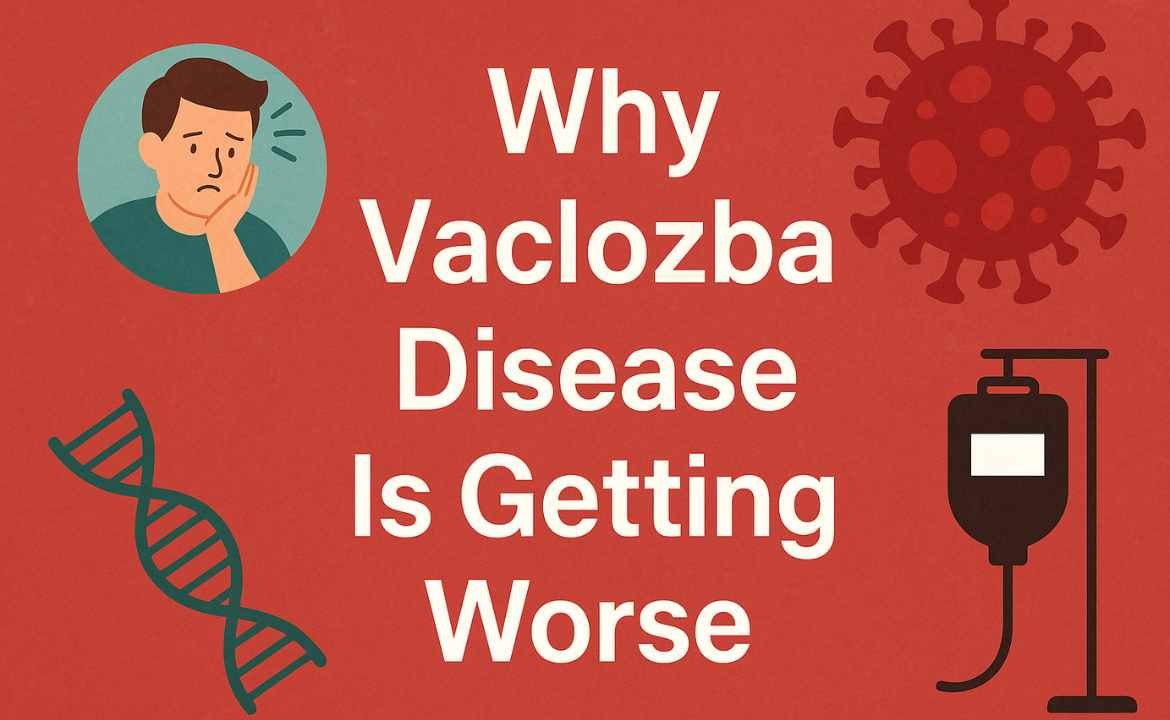Vaclozba disease is becoming an increasing concern in the medical world due to its unexpected rise in severity and spread. Experts across various fields are analyzing the causes behind the worsening trend of this mysterious and complex condition. Understanding the underlying factors, environmental triggers, and socio-medical responses is essential to manage and control its progression.
The question why Vaclozba disease is getting worse cannot be answered with a single cause. Instead, it involves a combination of delayed diagnosis, ineffective treatment protocols, and changing environmental conditions. As we explore the issue further, we’ll uncover the main reasons contributing to the intensification of this disease and what might be done to address it.
The Nature of Vaclozba Disease
Vaclozba disease is a chronic and often degenerative condition. It affects multiple body systems, depending on the individual case. Most patients experience symptoms that begin mildly and worsen over time. What makes this illness particularly dangerous is its unpredictable nature and resistance to conventional therapies.
A growing number of medical cases now show that patients are not responding well to first-line treatments. This could be because Vaclozba disease mutates or evolves, making it harder for medicine to manage. Another aspect is the delay in diagnosis, where symptoms are often misinterpreted, allowing the disease to develop unchecked.
Environmental and Genetic Triggers
Environmental Changes
Environmental factors play a significant role in the worsening of Vaclozba disease. Rising pollution levels, exposure to toxic chemicals, and contaminated water sources are all contributing to a decline in immune system health. Individuals already genetically predisposed to the illness are more vulnerable when exposed to harmful surroundings.
In regions with poor environmental regulation, the cases are rising faster. These communities are also more likely to lack access to clean air, clean water, and adequate nutrition—all essential in fighting or slowing down the impact of this disease.
Genetic Predisposition
Some populations have a higher likelihood of developing Vaclozba disease due to hereditary factors. Recent genetic studies have shown specific gene patterns that correlate with a higher risk. When both parents carry recessive traits, the risk increases in offspring.
This hereditary connection makes early testing and awareness crucial, but unfortunately, most affected regions lack the infrastructure for such preventative care. This delay in detection contributes heavily to the question of why Vaclozba disease is getting worse year after year.
Weak Healthcare Infrastructure
In many places, the worsening of Vaclozba disease can be directly linked to healthcare failures. These include a lack of trained professionals, outdated medical equipment, and overburdened hospitals. Without proper resources, doctors are often unable to provide the best care or detect the disease in time.
Another issue is the high cost of treatment. In countries where healthcare is privatized or expensive, patients may delay seeking help. This delay allows the disease to progress, leading to more severe and irreversible stages.
Telemedicine and rural outreach have made small improvements, but they are not enough to fully combat the rise in severe cases. There’s a need for more funding, medical research, and awareness campaigns targeted toward high-risk areas.
Treatment Resistance and Misuse of Medication
Resistance to Medication
One critical reason why Vaclozba disease is getting worse is the increasing resistance to drugs used to treat it. This happens when patients don’t complete their full course of treatment, or when drugs are overprescribed. Over time, the disease adapts, making older treatments less effective or even useless.
Health professionals now face challenges in designing new treatment regimens. Each patient reacts differently, which means there’s no “one-size-fits-all” method. This complicates the process of finding a universal cure or long-term solution.
Misuse and Overuse of Drugs
Another contributing factor is the misuse of medication by patients. Self-medication, overuse of antibiotics, and lack of adherence to prescription guidelines are accelerating the decline in treatment effectiveness. This leads to more advanced cases of Vaclozba disease, harder to treat and more costly to manage.
Lack of Awareness and Early Intervention
Most people affected by Vaclozba disease are unaware of its early symptoms. Fatigue, mild pain, or occasional inflammation are often dismissed as normal issues. By the time medical help is sought, the disease is already at an advanced stage.
Public awareness campaigns are rare, and even when they exist, they don’t always reach the most vulnerable populations. People in rural areas or underdeveloped countries are particularly at risk because they lack both education and access to modern communication tools.
Improving early detection could significantly slow down the number of worsening cases. Unfortunately, until more resources are dedicated to awareness, Vaclozba disease will continue getting worse with time.
Psychological and Social Impact
The psychological toll of Vaclozba disease is another reason for its worsening. Many patients experience anxiety, depression, or social isolation due to their chronic condition. These mental health issues can weaken the immune system and lower a patient’s ability to fight the disease.
Moreover, social stigma in certain cultures may prevent people from seeking timely help. Families may hide symptoms due to shame or fear of discrimination. This avoidance can delay treatment and lead to unnecessary complications.
Climate and Lifestyle Factors
Climate change is also influencing the spread and severity of Vaclozba disease. Hotter temperatures and unpredictable weather patterns are changing the habitats of pathogens and vectors that may trigger or worsen symptoms.
Additionally, lifestyle habits such as poor diet, smoking, alcohol use, and lack of exercise increase the body’s vulnerability to chronic conditions like Vaclozba. Sedentary lifestyles are particularly harmful and are becoming more common globally, contributing further to the worsening condition.
Conclusion
In summary, several key elements answer the question of why Vaclozba disease is getting worse: environmental degradation, weak healthcare systems, medication resistance, lack of awareness, and socio-psychological challenges. The situation is serious but not hopeless.
